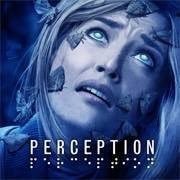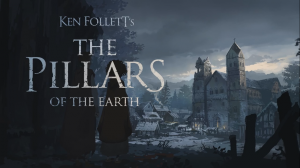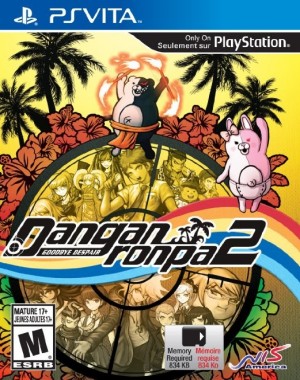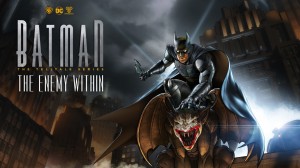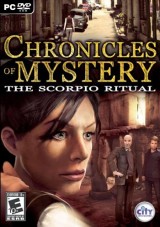Review for Tales of Cosmos
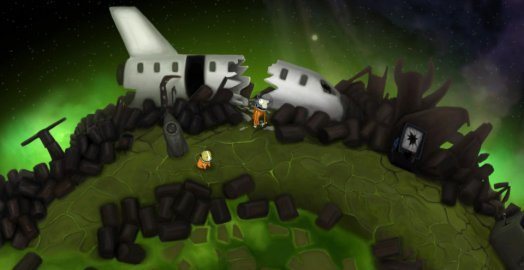
Note: Since time of writing, a number of improvements have been made as part of the "Director's Cut" version. This review is based solely on the original release.
Space, the final frontier... Boldly going where no man (or even dog) has gone before. Tales of Cosmos may not be a five-year mission – quite the contrary – but it does have strange new worlds to explore and (for some reason) mice who like chewing gum. It also has plenty of puzzles and two protagonists who'll need to team up to solve them. The story and characterisation may be a bit sketchy, unlike the lovely cartoon graphics, but overall this is a fairly entertaining blast from the past for those who like their adventuring a bit retro.
It's a very exciting day for intrepid scientists and explorers Perseus and Gagayev: they've just reached uncharted space, and seemingly in a repurposed Space Shuttle at that! No sooner have they started recording this momentous event in the ship's log, though, than everything starts to go horribly wrong. An intense magnetic field knocks out their engines, the (inevitable) attempt to take manual control doesn't work, and there's nothing left to do but abandon ship before they crash land on the delightfully-named Chlorine Beach.
The pair’s problems don’t stop once on the ground: Chlorine Beach is about as toxic and unwelcoming as it sounds, their spacecraft's broken in two and, just to add insult to injury, a crab runs off with Gagayev's wrench. There's nothing for it but to try to scrounge up some parts, MacGyver themselves a new vehicle from the scrap they find lying around, and try to work out what's going on. Oh, and did I mention that Perseus is a dog, and Gagayev (aka the Professor) is some kind of vaguely purple ape? Laika would be proud, if possibly a bit confused.
Yes, they may be wearing cute orange spacesuits and are smarter than your average bear, but this is very definitely a dog and an ape seeking out new life and new civilisations. In fact, the universe of Tales of Cosmos appears to be pretty much free of human life. Instead, you'll meet spacefaring rodents, a green sea captain with entirely too many arms, and even a glowing, hovering, alien squid-mushroom as you travel from world to world in your eventually-repaired vessel.
The worlds you visit are odd in other ways too. For one thing, they're absolutely tiny, so small you can walk all the way around in a minute or two. It’s not unlike the Samorost games, though here they're still round and full of familiar structures; they're just so small that you can see virtually a whole hemisphere at once.
They're also charmingly hand-drawn, cartoonish and intricate in a slightly naive style. Each world also has its own character, although only three really stand out. Chlorine Beach is an abandoned resort, but with luminous green sludge and cracking, hard-baked desert where the crystal clear waters and soft sand would normally be. Elsewhere, Clades looks like a mash-up of classic horror movies, with a sinister pumpkin-headed scarecrow, ominous ravens, and a forbidding castle. Novaclad feels like Soviet-era city, with august statues, a heavily-armoured war machine blocking your way, and greenhouses (though curiously without a collective farmer in sight). Our heroes also visit three smaller worlds, one that may as well be the Moon, a giant crystal in space, and a simple black ball. There's also a pint-size space station thrown in for good measure.
These are no mere static planets, either. Somehow, maybe because they're so small, they really hurtle through space, and the skies are filled with stars, nebulae and glorious auroras scudding by. It's quite something to behold, and makes everything feel vibrantly alive, despite a relative lack of other ambient animations.
The music, by contrast, is fine but bland, mostly just floaty ambient chords to convey the awe and majesty of being in space. The tempo does pick up now and then (notably to build tension during the climax) and it does add a bit of atmosphere, but not as much as, say, the rumbling thunder and cawing birds on Clades. There's also no voice work, perhaps not surprisingly given the non-human cast. Instead, the characters squeak or grunt and Perseus barks a translation, with subtitles for those who don’t speak dog. Gagayev's the strong silent type and gets by with expressive shrugs.
Controlling the dynamic duo is... interesting. Most of the time, our heroes wander around together, their tandem movement toggled by pressing F to make the other character follow your lead. Sometimes, though, you'll need to switch this off and control them individually to solve puzzles requiring teamwork. Perseus and Gagayev are very much partners, with complementary skills. Gagayev's good with his hands (paws?) and manages the team's inventory, while Perseus is better at talking to people and can bark very intimidatingly when necessary. To make progress, you'll need to switch between them pretty regularly (using the tab key).
Left-clicking prompts Perseus to talk to characters, and makes Gagayev interact with objects. Right-clicking causes Perseus to unleash his loudest bark, while Gagayev opens his inventory. The inventory itself is fairly standard, although you can't often combine objects. On the few occasions when you do need to do it, clicking the object that's central to the combination makes it appear below the inventory window, allowing you to drag other objects onto it. This dual-character control scheme is neat in theory, but can be frustrating in practice, especially when you forget which of the two you're controlling and bellow at someone rather than digging into your inventory! (I kept having flashbacks to when I was learning to drive and would wipe my windscreen at people rather than turning on the indicators.)
Once you get it reassembled, flying your improvised spacepod is an interesting experience too. (I hesitate to call it a spaceship, because it's so small I was never sure how they both managed to fit in there.) It works very much like arcade classics such as Asteroids or Gravitar: rotate and thrust, all while subject to the gravity of planets whirling madly around you. But just hold the left mouse button for propulsion and the ship will head for the mouse pointer. I initially thought there were meteors and other space debris to dodge, but that turned out to just be background art, making flying a gentle, serene experience. Due to how fast everything moves, you can't head off to another planet just by remembering which direction to go, but fortunately little arrows around the edges of the screen (brought up using the spacebar) help to point you in the right direction. (Those arrows are there from the start, too, just unlabelled, so there's no risk of missing anything.)
Each planet is surrounded by a white circle (possibly representing the atmosphere) and landing is just a case of flying into it and letting the game take over. One planet also has an extra landing area that can't be accessed from the ground. Handily, you land more or less below your entry point, so as you get to know the planets you can start to pick out good landing spots and save on walking. Just remember to make sure everybody's on board before taking off again: I really felt bad when I left Perseus behind at one point and had to go back for him! Also, as fun as flying around the universe was, I wound up doing a fair amount of backtracking to try out puzzle solutions and would really have appreciated some kind of quick travel option now and then.
Overall, the puzzles are tricky but (mostly) fair. In classic point-and-click tradition, there's a lot of trying stuff to see what happens and following your nose rather than planning ahead too much, but it can be quite satisfying to see all the disparate pieces unexpectedly come together, especially since Perseus is inclined to do adorable little victory somersaults. You'll find yourself playing baseball on the Moon, distracting a ghost, and supercharging a bionic bird, among other things. Perseus's bark can, as it turns out, be used to distract, awaken, and shake things loose. Every now and again, you'll also need to collaborate on a task, getting (for example) Perseus to divert someone's attention while Gagayev sneaks up from behind, or operating two controls simultaneously. These puzzles were the highlights for me, as they tended to come with a sudden flash of insight: "Oh! If I get Perseus to go there and do that, this'll happen, and then I can switch to Gagayev..."
Frustratingly, though, such moments are all too often marred by the need for precise timing. After setting one thing in motion, you don't get long to switch to the other character and take advantage of it, and if they're not standing in just the right spot, then their languid walk and animations mean you'll miss your window and have to try again. I usually had to try around three times before I got it down, turning what should have been minor triumphs into relief that I'd got it done.
Time is also an issue with a couple other puzzles, which depend on simply waiting in the right spot for something to happen. One's not too bad – you'll likely be passing through often enough that it'll happen spontaneously – but the other leaves you literally waiting for the planets to align. (There is a way around that, but that path is so obscure and convoluted it can only be called an Easter egg.) The latter is a neat idea in theory, especially given how quickly the planets move, but not that fun in practice. And that's typical of the game as a whole: there are several new and interesting takes on point-and-click standards, like dividing gameplay tasks between two characters, the spaceflight mechanic, and collaborating on puzzles, but they all have their rough edges.
The actual story is pretty much just an excuse to go on a quest, explore these varied, seemingly unconnected worlds, and poke around. Thankfully, then, the journey mostly manages to get by on charm and whimsy. The characters are eclectic, but not especially deep or fleshed out. Why is a crack team of mouse explorers on the not-Moon? How did the ghost of a great military leader wind up in a creepy old castle? What happened to all Novaclad's people? Who knows. Then again, with only 4-6 hours of playtime and so much to get through, it's perhaps understandable that the people you meet wind up more like oddball steps along the road than beings you want to hang around and talk to. Again, there's a definite retro feel to it all, a seemingly random mix of characters and places thrown together to entertain and serve as the backdrop to the puzzles rather than expounding at length just to build a believable world. I found that refreshing, for the most part, but your mileage may vary.
All in all, when the day had been saved and the credits were rolling, I found myself missing Perseus's excited somersaults and Gagayev's Gallic shrugs. Tales of Cosmos isn't the most ambitious of titles, and its characters are sketched in much more lightly than its carefully-constructed cartoon backdrops, but it doesn't take itself too seriously and just tries to have fun, and that's an all-too-rare commodity these days. There are more than a few hiccups along the way, but the game brings some fresh mechanics to the table, together with a solid helping of classic puzzling. If you love story and characterisation you should probably look elsewhere, but if you prefer your adventures a little more old-school, it could be worth taking this trip into the unknown.
Our Verdict:
Tales of Cosmos is an adventure in the classic mould, putting puzzles before story, having fun before making much sense, and ideas before polish. Whether that’s refreshing or just old-fashioned is up to you.











